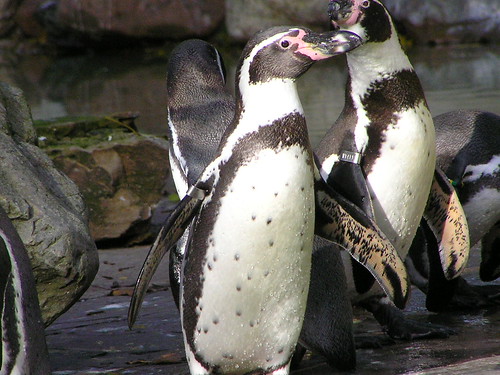The Paracas National Reserve found in Peru are a few kilometers from the mystical Nazca lines, this set of islands is one of the richest marine ecosystems in the world.

Photography by Martintoy
Three years ago, an earthquake followed by tsunami took everything. The maretazo, as they say here, barges crashed into houses, attacked two thirds of the buildings and plunged to 200 meters inland.
Today there are few traces of that nightmare in Paracas, a small port on the Pacific, 260 km south of Lima. The hotels were reduced to rubble have reopened, totally refurbished. Also launched a pair of five-star resorts, resumed and expanded the range of tours, and tourism picked up the momentum that had been experiencing before the cataclysm.
Because even these arid and windy shores came, and arriving visitors from all over the world, curious about one of the rarest marine ecosystems and rich existence. It is in the Ballestas Islands, a group of islands dotted with 20 km of the Bay of Paracas, where more than 200 species of seabirds, some from as far afield as Cape Horn or the Arctic.

Photography by kudumomo
Thus, on granite rocks crowd cormorants, pelicans, earrings (symbol of the islands are named after the two feathers hanging on the side of the head, which pair of earrings) or boobies. The latter, so called because it is thrown like an arrow into the sea in search of food, the bird guano is also par excellence.
Guano is the excrement of sea birds and a natural fertilizer quoted, besides being one of the main exports of Peru in the nineteenth century, to the extent that it was the trigger of the Pacific War (the refusal of companies Chile to pay a tax on the guano). It also says that the Ballestas islands lost 30 feet when extracted millions of tons of fertilizer for this particular release for Europe and the U.S. in mid-1800.
The truth is that even today continues to put the birds in these enclaves yours, and you can see the workers still extract the guano traditional way, loading large sacks or bags in wooden boats. Fortunately, the collection is confined to a handful of islands, so the pungent and penetrating that suddenly fills the air lasts only a few minutes.
But in addition to the variety of birds, the strange rock formations, which include tunnels, vaults and natural caves, also hundreds of frolicking sea lions, seals and Humboldt penguins and other species that make up the attractive eco-tourism in the area (Not to mention the dolphins that often accompany the jumps and spins the tourist boats, to the delight of passengers).

Photography by belgianchocolate
So rich is life in this bay, in large part because of the cold Humboldt current, which fill the waters of micro-plankton and that the islands are also known as the Galapagos of Peru.
For that reason they are a protected area is prohibited to land and must settle for watching from boats herds of sea lions howl, growl and fight, and finally end up doing the show day.
The bonus of the walk to the islands is called the chandelier, a geoglyph the 130 meter path in the sand calcareous a bluff, can see clearly without the boat lowered.
Bon voyage!
One Response to “Paracas: The Galapagos of Peru”
Leave a Reply
You must be logged in to post a comment.
septiembre 20th, 2011 at 2:42 pm
[…] species were immutable. It took several years of thorough studies and animal samples collected in the Galapagos to begin to get an idea of what should be his revolutionary theory. It is known the witness […]